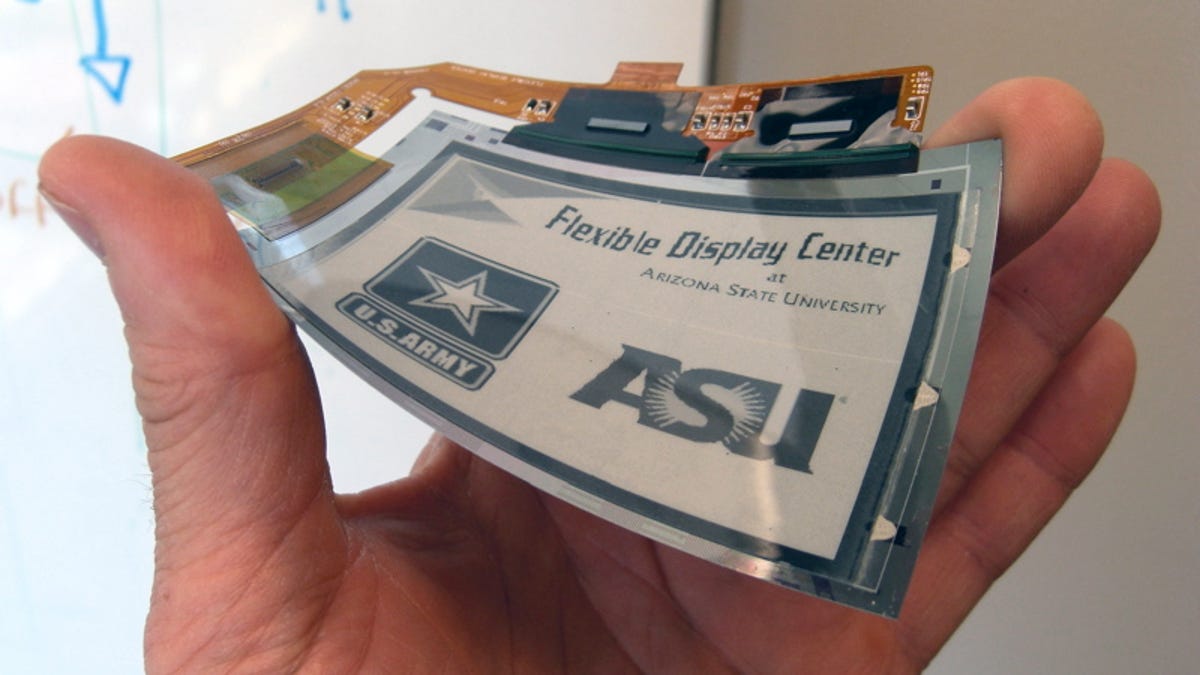Army invests $50 million in flexible displays
The U.S. military unit commits an additional five years of funding for research of the thin electronic screens at Arizona State University's Flexible Display Center.

The U.S. Army has committed to renewing its partnership and providing another $50 million to Arizona State University's flexible-display research facility, the university announced on Thursday.
That brings the Army's total investment since the Flexible Display Center (FDC) started in 2004 to $100 million.
The announcement comes in conjunction with a two-day event in Tempe, Ariz., near ASU, in which the U.S. Army and Flexible Display Center plan to showcase their progress to the public.
So why is the military so keen on flexible displays?
It's all about information and communications...and possibly profit.
Flexible displays are paper-thin electronic screens that can be bent, mounted onto objects, and sewn into clothing. Soldiers could easily wear them on their sleeves or wrists, and use them to receive critical data in real time in the form of instructions, photos, or maps.
In addition, flexible displays can be made more durable than regular LCD screens, allowing them to get banged around in combat and still work. They also consume only a fraction of the power of LCDs.
That doesn't just make them good for the military; it also makes for cool tech products.
That commercial value is something the military, ASU, and its partners clearly have in mind.
In addition to the design and development of things like integrated circuits and thin-film transistor (TFT) arrays, the Flexible Display Center has facilities for early-stage prototyping and low-volume production.
One product has already come out of the center. The Soldier Flex PDA, developed by Inhand Electronics, was introduced for military testing in 2007. It's a rugged glass-free PDA containing a screen developed by the Flexible Display Center.
The center even started a Flexible Display Center YouTube channel for showing the public its latest prototypes.
The Flexible Display Center's partnership with ASU and the U.S. Army also extends to the private sector, as well as other universities.
Those partners include the Center of Advanced Materials and Nanotechnology at Lehigh University, Boeing, E Ink, Hewlett-Packard, LG Display, Raytheon, and Plextronics.

